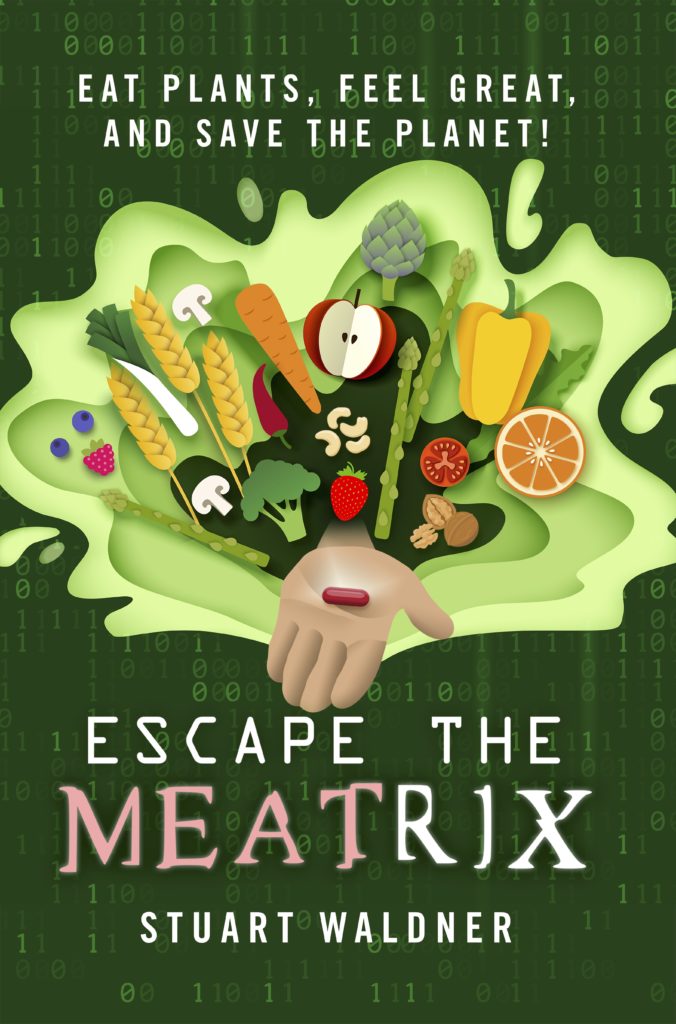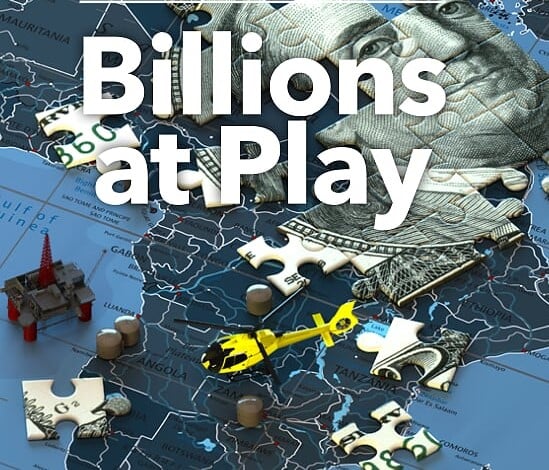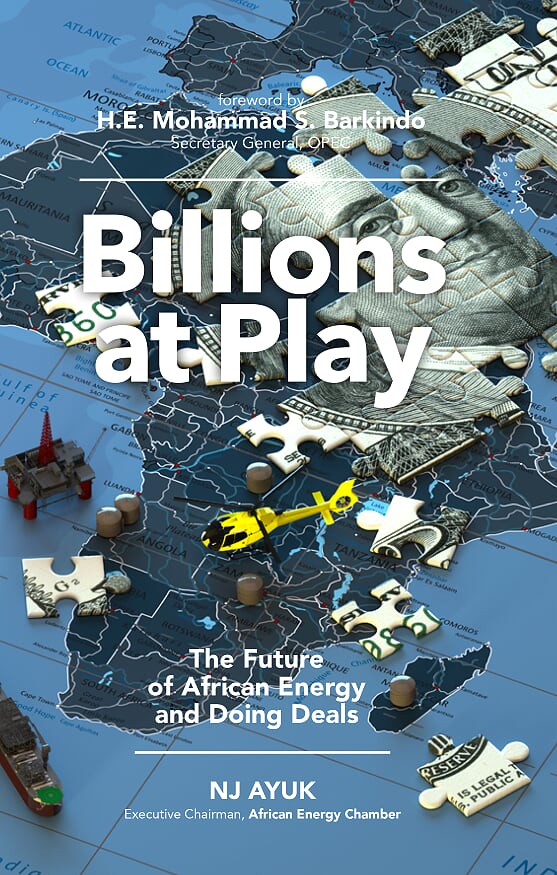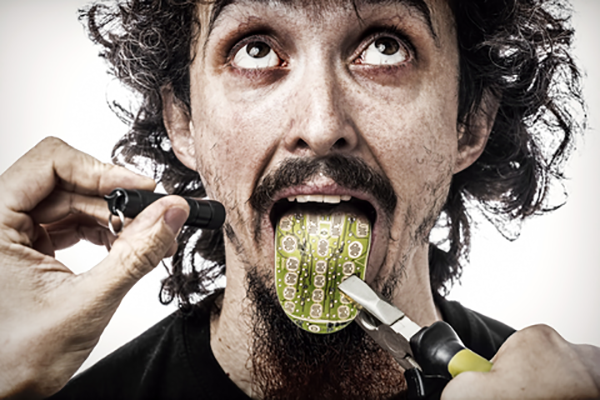More famous for cracking the wartime Enigma code and his contributions to mathematics, computer science and artificial intelligence, it may come as a surprise that Turing harboured such an interest. In fact, it was an extension of his fascination with the workings of the mind and the underlying nature of life.
The secret glory of Turing’s wartime success had faded by the 1950s, and he was holed up in the grimly industrial confines of the University of Manchester. In theory he was there to develop programs for one of the world’s first electronic computers – a motley collection of valves, wires and tubes – but he found himself increasingly side-lined by greasy-fingered engineers who were more focused on nuts and bolts than numbers. This disconnection was probably intentional on Turing’s part, rather than deliberate exclusion on theirs, as his attention was drifting away from computing towards bigger questions about life.
It was a good time to be excited about biology. Researchers around the world were busy getting to grips with the nature of genes, and James Watson and Francis Crick would soon reveal the structure of DNA in 1953. There was also a growing interest in cybernetics – the idea of living beings as biological computers that could be deconstructed, hacked and rebuilt. Turing was quickly adopted into a gang of pioneering scientists and mathematicians known as the Ratio Club, where his ideas about artificial intelligence and machine learning were welcomed and encouraged.
Against this backdrop Turing took up a subject that had fascinated him since before the war. Embryology – the science of building a baby from a single fertilised egg cell – had been a hot topic in the early part of the 20th century, but progress sputtered to a halt as scientists realised they lacked the technical tools and scientific framework to figure it out. Perhaps, some thinkers concluded, the inner workings of life were fundamentally unknowable.
Turing viewed this as a cop-out. If a computer could be programmed to calculate, then a biological organism must also have some kind of underlying logic too.
He set to work collecting flowers in the Cheshire countryside, scrutinising the patterns in nature. Then came the equations – complex, unruly beasts that couldn’t be solved by human hands and brains. Luckily the very latest computer, a Ferranti Mark I, had just arrived in Manchester, and Turing soon put it to work crunching the numbers. Gradually, his “mathematical theory of embryology”, as he referred to it, began to take shape.
Like all the best scientific ideas, Turing’s theory was elegant and simple: any repeating natural pattern could be created by the interaction of two things – molecules, cells, whatever – with particular characteristics. Through a mathematical principle he called ‘reaction–diffusion’, these two components would spontaneously self-organise into spots, stripes, rings, swirls or dappled blobs.
In particular his attention focused on morphogens – the then-unknown molecules in developing organisms that control their growing shape and structure. The identities and interactions of these chemicals were, at the time, as enigmatic as the eponymous wartime code. Based on pioneering experiments on frog, fly and sea urchin embryos from the turn of the 20th century – involving painstakingly cutting and pasting tiny bits of tissue onto other tiny bits of tissue – biologists knew they had to be there. But they had no idea how they worked.
Although the nature of morphogens was a mystery, Turing believed he might have cracked their code. His paper ‘The chemical basis of morphogenesis’ appeared in the Philosophical Transactions of the Royal Society in August 1952.
Sadly, Turing didn’t live long enough to find out whether he was right. He took his own life in 1954, following a conviction for ‘gross indecency’ and subsequent chemical castration – the penalty for being openly gay in an intolerant time. In those two short years there was little to signpost the twists and turns that his patterns would take over the next 60 years, as biologists and mathematicians battled it out between the parallel worlds of embryology and computing.
In a cramped office in London, tucked away somewhere on the 27th floor of Guy’s Hospital, Professor Jeremy Green of King’s College London is pointing at a screen.
A program that simulates Turing patterns is running in a small window. At the top left is a square box, filled with writhing zebra-like monochrome stripes. Next to it is a brain-bending panel of equations. “It’s astonishing that Turing came up with this out of nowhere, as it’s not intuitive at all,” says Green, as he pokes a finger at the symbols. “But the equations are much less fearsome than you think.”
The essence of a Turing system is that you have two components, both of which can spread through space (or at least behave as if they do). These could be anything from the ripples of sand on a dune to two chemicals moving through the sticky goop holding cells together in a developing embryo. The key thing is that whatever they are, the two things spread at different speeds, one faster than the other.
One component is to be auto-activating, meaning that it can turn on the machinery that makes more of itself. But this activator also produces the second component – an inhibitor that switches off the activator. Crucially, the inhibitor has to move at a faster pace than the activator through space.
The beauty of it is that Turing systems are completely self-contained, self-starting and self-organising. According to Green, all that one needs to get going is just a little bit of activator. The first thing it does is make more of itself. And what prevents it from ramping up forever? As soon as it gets to a certain level it switches on the inhibitor, which builds up to stop it.
“The way to think about it is that as the activator builds up it has a head start,” says Green. “So you end up with, say, a black stripe, but the inhibitor then builds up and spreads more quickly. At a certain point it catches up with the activator in space and stops it in its tracks. And that makes one stripe.”
From these simple components you can create a world of patterns. The fearsome equations are just a way of describing those two things. All you need to do is adjust the conditions, or ‘parameters’. Tweaking the rates of spreading and decay, or changing how good the activator is at turning itself on and how quickly the inhibitor shuts it down, subtly alters the pattern to create spots or stripes, swirls or splodges.
Despite its elegance and simplicity, Turing’s reaction–diffusion idea gained little ground with the majority of developmental biologists at the time. And without the author around to champion his ideas, they remained in the domain of a small bunch of mathematicians. In the absence of solid evidence that Turing mechanisms were playing a part in any living system, they seemed destined to be a neat but irrelevant distraction.
Biologists were busy grappling with a bigger mystery: how a tiny blob of cells organises itself to create a head, tail, arms, legs and everything in between to build a new organism.
In the late 1960s a new explanation appeared, championed by the eminent and persuasive embryologist Lewis Wolpert and carried aloft by the legion of developmental biologists that followed in his footsteps. The concept of ‘positional information’ suggests that cells in a developing embryo sense where they are in relation to an underlying map of molecular signals (the mysterious morphogens). By way of explanation, Wolpert waved the French flag.
Imagine a rectangular block of cells in the shape of a flag. A strip of cells along the left-hand edge are pumping out a morphogen – let’s call it Striper – that gradually spreads out to create a smooth gradient of signal, high to low from left to right. Sensing the levels of Striper around them, the cells begin to act accordingly. Those on the left turn blue if the level of Striper is above a certain specific threshold, those in the middle turn white in response to the middling levels of Striper they detect, while those on the far right, bathing in the very lowest amounts of Striper, go red. Et voila – the French flag.
Wolpert’s flag model was simple to grasp, and developmental biologists loved it. All you had to do to build an organism was to set up a landscape of morphogen gradients, and cells would know exactly what to become – a bit like painting by numbers. More importantly, it was clear to researchers that it worked in real life, thanks to chickens.
Even today, chicken embryos are an attractive way to study animal development. Scientists can cut a window in the shell of a fertilised hen’s egg to watch the chick inside, and even fiddle about with tweezers to manipulate the growing embryo. What’s more, chicken wings have three long bony structures buried inside the tip, analogous to our fingers. Each one is different – like the three stripes of a French flag – making them the perfect system for testing out Wolpert’s idea.
In a series of landmark experiments in the 1960s, John Saunders and Mary Gasseling of Wisconsin’s Marquette University carefully cut a piece from the lower side of a developing chick’s wing bud – imagine taking a chunk from the edge of your hand by the little finger – and stuck it to the upper ‘thumb’ side.
Instead of the usual three digits (thumb, middle and little ‘fingers’), the resulting chicken had a mirror wing – little finger, middle, thumb, thumb, middle, little finger. The obvious conclusion was that the region from the base of the wing was producing a morphogen gradient. High levels of the gradient told the wing cells to make a little finger, middling ones instructed the middle digit, and low levels made a thumb.
It was hard to argue with such a definitive result. But the ghost of Turing’s idea still haunted the fringes of biology.
In 1979 a physicist-turned-biologist and a physical chemist caused a bit of a stir. Stuart Newman and Harry Frisch published a paper in the high-profile journalScience showing how a Turing-type mechanism could explain the patterning in a chicken’s fingers.
They simplified the developing three-dimensional limb into a flat rectangle and figured out reaction–diffusion equations that would generate waves of an imaginary digit-making morphogen within it as it grew. The patterns generated by Newman and Frisch’s model are clunky and square, but they look unmistakeably like the bones of a robot hand.
They argued that an underlying Turing pattern makes the fingers, which are then given their individual characteristics by some kind of overlying gradient – of the sort proposed by the French flag model – as opposed to the gradient itself directing the creation of the digits.
“People were still in an exploratory mode in the 1970s, and Turing’s own paper was only 25 years old at that point. Scientists were hearing about it for the first time and it was interesting,” says Newman, now at New York Medical College in the USA. “I was lucky to get physics-oriented biologists to review my paper – there wasn’t an ideology on the limb that had set in, and people were still wondering how it all worked.”
It was a credible alternative to Wolpert’s gradient idea, prominently published in a leading journal. According to Newman, the reception was initially warm. “Straight after it was published, one of Wolpert’s associates, Dennis Summerbell, wrote me a letter saying that they needed to consider the Turing idea, that it was very important. Then there was silence.”
A year later, Summerbell’s view had changed. He published a joint paper with biologist Jonathan Cooke, which made clear that he no longer considered it a valid idea. Newman was shocked. “From that point on nobody in that group ever mentioned it, with one exception – Lewis Wolpert himself once cited our paper in a symposium report in 1989 and dismissed it.”
The majority of the developmental biology community did not consider Turing patterns important at all. Fans of the positional information model closed ranks against Newman. The invitations to speak at scientific meetings dried up. It became difficult for him to publish papers and get funding to pursue Turing models. Paper after paper came out from scientists who supported the French flag model.
Newman explains: “A lot of them got to be editors at journals – I knew some colleagues who felt that pressure was put on them to keep our ideas out of some of the good journals. In other areas people were as open to new ideas as you might expect, but because Wolpert and his scientific descendants were so committed to his idea it became part of the culture of the limb world. All the meetings and special editions of journals were all centred around it, so it was very difficult to displace.”
Further blows came from the fruit fly Drosophila melanogaster – another organism beloved of developmental biologists. For a while the regimented stripes that form in the fly’s developing embryo were thought to develop through a Turing mechanism. But eventually they turned out to be created through the complex interplay of morphogen gradients activating specific patterns of gene activity in the right place at the right time, rather than a self-striping system.
Newman was disappointed by the failure of the research community to take his idea seriously, despite countless hours of further work on both the mathematical and molecular sides. For decades, his and Frisch’s paper languished in obscurity, haunting the same scientific territory as Turing’s original paper.
High up in the Centre for Genomic Regulation in Barcelona is an office papered with brightly coloured pictures of embryonic mouse paws. Each one shows neat stripes of developing bones fanning out inside blob-like budding limbs – something the room’s decorator, systems biologist James Sharpe, is convinced can be explained by Turing’s model.
Turing’s idea is simple, so one can easily imagine how it could explain the patterns we see in nature. And that’s part of the problem, because a simple likeness isn’t proof that a system is at work – it’s like seeing the face of Jesus in a piece of toast. Telling biological Just So Stories about how things have come to be is a dangerous game, yet this kind of thinking was used to justify the French flag model too.
In Sharpe’s view it was the chicken’s fault. “If studies of limb development had started with a mouse,” he says, “the whole history would have been very different.”
In his opinion there was a built-in bias right from the start that digits were fundamentally different from each other, requiring specific individual instructions for each one (provided by precise morphogen ‘coordinates’, according to the French flag model). This was one of the primary arguments made against a role for Turing patterns being involved in limb development – they can only ever generate the same thing, such as a stripe or a spot, again and again.
So how could a Turing system create the three distinctive digits of a chick’s limb? Surely each one must be told to grow in a certain way by an underlying gradient ‘map’? But a chick only has three fingers. “If they had 20, you would see that wasn’t the case,” says Sharpe, wiggling his fingers towards me by way of demonstration. “They’d all look much more similar to each other.”
I look down at my own hand and see his point. I have four fingers and a thumb, and each finger doesn’t seem to have particularly unique identity of its own. Sure, there are subtle differences in size, yet they’re basically the same. According to Sharpe, the best evidence that they aren’t that different comes from one of the most obvious but incorrect assumptions about the body: that people always have five fingers.
In reality the number of fingers and toes is one of the least robust things about the way we’re made. “We don’t always have five,” he says, “and it’s surprisingly common to have more.” In fact, it’s thought that up to one in 500 children is born with extra digits on their hands or feet. And while the French flag model can’t account for this, Turing patterns can.
By definition Turing systems are self-organising, creating consistent patterns with specific properties depending on the parameters. In the case of a stripy pattern, this means that the same set-up will always create stripes with the same distance (or wavelength, as mathematicians call it) between them. If you disrupt the pattern, for example by removing a chunk, the system will attempt to fill in the missing bits in a highly characteristic way. And while Turing systems are good at generating repeating patterns with a consistent wavelength, such as regular-sized fingers, they’re less good at counting how many they’ve made, hence the bonus digits.
Importantly, a particular Turing system can only make the same thing over and over again. But look closely at the body and there are many examples of repeating structures. In many animals, including ourselves, the fingers and toes are more or less all the same. But, according to the flag model, structures created in response to different levels of morphogen would all have to be different. How to explain the fact that the same thing can be ‘read’ out from a higher and lower morphogen level?
Sharpe maintains that the concept of an underlying molecular ‘road map’ just doesn’t hold up. “I don’t think it’s an exaggeration to say that for a long time a lot of the developmental biology community has thought that you have these seas of gradients washing over a whole organ. And because they’re going in different directions, every part of the organ has a different coordinate.”
In 2012 – the centenary of Turing’s birth and 60 years since his ‘chemical morphogenesis’ paper – Sharpe showed that this idea (at least in the limb) was wrong.
The proof was neatly demonstrated in a paper by Sharpe and Maria Ros at the University of Cantabria in Spain, published in Science. Ros used genetic engineering techniques to systematically remove members of a particular family of genes from mice. Their targets were the Hox genes, which play a fundamental role in organising the body plan of a developing embryo, including patterning mouse paws and human hands.
Getting rid of any of these crucial regulators might be expected to have some fairly major effects, but what the researchers saw was positively freakish. As they knocked out more and more of the 39 Hox genes found in mice, the resulting animals had more and more fingers on their paws, going up to 15 in the animals missing the most genes.
Importantly, as more Hox genes were cut and more fingers appeared, the spacing between them got smaller. So the increased number of fingers wasn’t due to larger paws, but to smaller and smaller stripes fitting into the same space – a classic hallmark of a Turing system, which had never been observed before in mouse limbs. When Sharpe crunched the numbers, Turing’s equations could account for the extra fingers Ros and her team were seeing.
That’s great for the near-identical digits of a mouse, I say, but it doesn’t explain why the chick’s three digits are so different. Sharpe scribbles on a piece of paper, drawing a Venn diagram of two scruffy overlapping circles. One is labelled “PI” for positional information à la Wolpert, the other “SO” for self-organising systems such as Turing patterns. Tapping at them with his pen, he says, “The answer is not that Turing is right and Wolpert was wrong, but that there’s a combination at work.”
Wolpert himself has conceded, to a certain extent, that a Turing system could be capable of patterning fingers. But it can’t, by definition, impart the differences between them. Morphogen gradients must work on top of this established pattern to give the digits their individual characteristics, from thumb to pinky, marrying together Wolpert’s positional information idea with Turing’s self-organising one.
§
Other real-life examples of Turing systems that have been quietly accumulating over the past two decades are now being noticed. A 1990 paper from a trio of French chemists described the first unambiguous experimental evidence of a Turing structure: they noticed a band of regular spots appear in a strip of gel where a colour-generating reaction was happening – the tell-tale sign of the system at work.
While studying elegantly striped marine angelfish, Japanese researcher Shigeru Kondo noticed that rather than their stripes getting bigger as the fish aged (as happens in mammals like zebras), they kept the same spacing but increased in number, branching to fill the space available. Computer models revealed that a Turing pattern could be the only explanation. Kondo went on to show that the stripes running along the length of a zebrafish can also be explained by Turing’s maths, in this case thanks to two different types of cells interacting with each other, rather than two molecules.
It turns out that the patterned coats of cats, from cheetahs and leopards to domestic tabbies, are the result of Turing mechanisms working to fill in the blank biological canvas of the skin. The distribution of hair follicles on our heads and the feathers on birds are also thanks to Turing-type self-organisation.
Other researchers are focusing on how Turing’s mathematics can explain the way tubes within an embryo’s developing chest split over and over again to create delicate, branched lungs. Even the regular array of teeth in our jaws probably got there by Turing-esque patterning.
Meanwhile in London, Jeremy Green has also found that the rugae on the roof of your mouth – the repeated ridges just above your front teeth that get burnt easily if you eat a too-hot slice of pizza – owe their existence to a Turing pattern.
As well as fish skins, feathers, fur, teeth, rugae and the bones in our hands, James Sharpe thinks there are plenty of other parts of the body that might be created through self-organising Turing patterns, with positional information laid on top. For a start, while our digits are clearly stripes, the clustered bones of the wrist could be viewed as spots. These can easily be made with a few tweaks to a Turing equation’s parameters.
Sharpe has some more controversial ideas for where the mechanism might be at work – perhaps patterning the regular array of ribs and vertebrae running up our spine. He even suspects that the famous stripes in fruit fly embryos have more to do with Turing patterning than the rest of the developmental biology community might have expected.
Given that he works in a building clad in horizontal wooden bars, I ask if he’s started to see Turing patterns everywhere he looks. “I’ve been through that phase,” he laughs. “During the centenary year it really was Turing everywhere. The exciting possibility for me is that we’ve misunderstood a whole lot of systems and how easy it can be to trick ourselves – and the whole community – into making up Just So Stories that seem to fit and being happy with them.”
Stuart Newman agrees, his 1979 theory now back out of the shadows. “When you start tugging at one thread, a lot of things will fall apart if you’re on to something. They don’t want to talk about it, not because it’s wrong – it’s easy to dismiss something that’s wrong – but probably because it’s right. And I think that’s what turned out to be the case.”
Slowly but surely, researchers are piecing together the role of Turing systems in creating biological structures. But until recently there was still one thing needed to prove that there’s a Turing pattern at work in the limb: the identities of the two components that drive it.
That mystery has now been solved by James Sharpe and his team in a paper published in August 2014, again in the journal Science. Five years in the making, it combines delicate embryo work with hardcore number crunching.
Sharpe figured that the components needed to fuel a Turing pattern in the limb must show a stripy pattern that reflects the very early developing fingers – either switched on in the future fingers and off in the cells destined to become the gaps, or vice versa.
To find them, graduate student Jelena Raspopovic collected cells from a developing mouse limb bud, in which only the merest hint of gene activity that leads to digit formation can be seen. After separating the two types of cells, and much painstaking molecular analysis, some interesting molecular suspects popped out. Using computer modelling, Sharpe was able to exactly recapitulate a gradual appearance of digits that mirrored what they saw in actual mouse paws, based on the activity patterns of these components.
Intriguingly, unlike the neat two-part system invoked by Turing, Sharpe thinks that three different molecules work together in the limb to make fingers. One is Sox9, a protein that tells cells to “make bones here” in the developing digits. The others are signals sent by two biological messenger systems: one called BMP (bone morphogenetic protein) signalling, which switches on Sox9 in the fingers, and another messenger molecule known as WNT (pronounced “wint”), which turns it off in the gaps between fingers.
Although classic Turing systems invoke just two components – an activator and an inhibitor – this situation is a little more complicated. “It doesn’t seem to boil down to literally just two things,” Sharpe explains. “Real biological networks are complex, and in our case we’ve boiled it down to two signalling pathways rather than two specific molecules.”
Further confirmation came when they went the other way – from the model to the embryo. Another of Sharpe’s students, Luciano Marcon, tweaked the program to see what would happen to the patterns if each signalling pathway was turned down. In the simulation, reducing BMP signalling led to a computer-generated paw with no fingers. Conversely, turning down WNT predicted a limb made entirely of digits fused together.
When tested in real life, using tiny clumps of limb bud tissue taken from early mouse embryos and grown in Petri dishes, these predictions came true. Treating the cultures with drugs that dampen down each pathway produced exactly what the program had predicted – no fingers, or all fingers. An alternative simulation with both signals turned down at the same time predicts two or three fat fingers instead of five neat digits. Again, using both drugs at once on real mouse limb buds created exactly the same pattern. Being able to flip from the model to the embryo and back again – making testable predictions that are borne out by experiments – is a key piece of proof that things are working in the way Sharpe thinks.
And if the theory is finally accepted, and we figure out how and where Turing systems are used to create structures in nature, what can we do with this knowledge? Quite a lot, according to Jeremy Green.
“You can live without rugae but the things like your heart valves or your whole palate, they really matter,” he says. “The regenerative medics working on any stem cell technology or cell therapy in the future are going to need to understand how these are made. The growth factor research in the 1980s was the bedrock of the stem cell therapies that are starting to go into clinical trials now, but it inspired the whole world of regenerative medicine. That’s the kind of timescale we’re talking about.”
At Guy’s Hospital he sees close-up what happens when development goes awry. His department specialises in birth defects affecting the face and skull, and Green believes that understanding the underlying molecular nuts and bolts is the key to fixing them. “What we’re doing now is very theoretical, and we can fantasise about how it’s going to be useful, but in 25 years that’s the kind of knowledge we’ll need to have. It’ll probably be taken for granted by then, but we’ll need to know all this Turing stuff to be able to build a better body.”
In the last years of Alan Turing’s life he saw his mathematical dream – a programmable electronic computer – sputter into existence from a temperamental collection of wires and tubes. Back then it was capable of crunching a few numbers at a snail’s pace. Today, the smartphone in your pocket is packed with computing technology that would have blown his mind. It’s taken almost another lifetime to bring his biological vision into scientific reality, but it’s turning out to be more than a neat explanation and some fancy equations.












